Introduction to Safety Valves for Compressed Air
Safety valves are critical components in any compressed air system, serving as the last line of defense against potentially dangerous overpressure situations. These protective devices are designed to open automatically when system pressure exceeds a predetermined value, releasing excess pressure and preventing equipment damage, catastrophic failures, or even serious workplace accidents.
In American industrial environments, where pneumatic systems are fundamental to numerous production processes, safety valves are not simply optional accessories but mandatory components required by regulations that ensure operational safety and legal compliance.
The proper selection and installation of appropriate safety valves for compressed air is essential for:
- Protecting investments in expensive pneumatic equipment
- Ensuring the safety of technical personnel and operators
- Complying with current industrial safety regulations
- Maintaining operational continuity by avoiding unscheduled downtime
- Extending the service life of the entire pneumatic system
Table of Contents
Operating Principles
Safety valves for compressed air systems operate under precise mechanical principles that ensure their reliability in critical situations. The basic mechanism consists of a valve disc held in the closed position by a controlled force, typically provided by a calibrated spring.
Pressure-Activated Opening Mechanism
The operation is based on the balance between two opposing forces:
- Spring force: Keeps the valve closed during normal operation and determines the set pressure.
- Force exerted by the fluid (compressed air): Acts on the surface of the valve disc.
When system pressure exceeds the set value, the force exerted by the compressed air overcomes the spring resistance, causing the valve to open and allowing excess pressure to discharge. Once the pressure decreases below the set value (plus a differential known as "blowdown"), the spring closes the valve, restoring normal system operation.
Essential Technical Characteristics
Safety valves for compressed air available in the US market feature several important technical characteristics:
- Construction: Generally manufactured from brass, with internal components made of stainless steel for greater durability and corrosion resistance.
- Connections: Standardized threads (typically 1/4", 3/8", 1/2" NPT) to facilitate installation in various systems.
- Manual activation elements: Many include pull rings that allow function testing or manual pressure release.
- Pressure ranges: Available in various set pressure ranges to adapt to different requirements of industrial pneumatic systems.
Key Points: Safety Valve Operation
- Operate through the balance between spring force and system pressure.
- Open automatically when the set pressure is exceeded.
- Primarily manufactured from brass with durable internal components.
- Include elements for manual testing and function verification.
Types of Safety Valves for Pneumatic Systems
In the field of industrial pneumatic systems, there are various types of safety valves designed for specific applications. Understanding the differences between them is fundamental to selecting the most appropriate one according to the particular requirements of each installation.
Direct-Acting Safety Valves
These are the most common type in compressed air systems. Their simple and reliable design makes them ideal for most standard industrial applications.
- Characteristics: Immediate response, compact design, minimal maintenance.
- Typical applications: Pressure tanks, distribution lines, small to medium-sized pneumatic equipment.
Proportional Safety Valves
These offer a gradual opening proportional to the pressure increase, which reduces stress on the system during discharge.
- Characteristics: Modulated opening, lower noise during discharge, greater precision.
- Typical applications: Sensitive systems where sudden pressure fluctuations must be avoided, installations with low noise requirements.
Pilot-Operated Safety Valves
These use a pilot system to control the opening of the main valve, allowing greater precision and discharge capacity.
- Characteristics: High flow capacity, excellent tightness, greater precision in set pressure.
- Typical applications: Large screw compressors, centralized compressed air systems, large-scale industrial installations.
Safety Valves for Specific Applications
There are specialized models for particular needs within the American industrial sector:
- High-temperature valves: With specific materials and designs to withstand elevated temperatures in compressor discharge.
- Sanitary safety valves: Manufactured with materials compatible with food, pharmaceutical, or cosmetic industries.
- Valves with integrated silencer: Reduce noise during discharge, especially important in work environments where sound levels are regulated.
Regulations and Certifications
In the United States, safety valves for compressed air systems are subject to strict regulations that ensure their reliability and operational safety. Compliance with these regulations is not optional but a legal requirement for any industrial installation.
ASME Boiler and Pressure Vessel Code
The American Society of Mechanical Engineers (ASME) Boiler and Pressure Vessel Code Section VIII establishes essential safety requirements for pressure equipment, including safety valves. This code classifies equipment according to its hazard level and establishes conformity assessment procedures.
For safety valves, this implies:
- ASME certification and stamping
- Manufacturer's declaration of conformity
- Complete technical documentation
- Evaluation procedures by authorized testing laboratories (for higher categories)
Applicable Technical Standards
The main technical standards governing the design and manufacture of safety valves in the US context include:
- ASME B16.34: Valves - Flanged, Threaded, and Welding End
- API 520/521: Sizing, Selection, and Installation of Pressure-Relieving Devices
- NFPA 70: National Electrical Code (for valves with electrical components)
Certifications and Documentation
When purchasing safety valves for pneumatic systems, it is essential to verify that they include:
- ASME certification
- Factory calibration and test certificate
- Complete technical documentation including set pressure
- Installation, use, and maintenance instructions
All safety valves available from Pneumatig comply with the ASME Boiler and Pressure Vessel Code and other applicable regulations, thus ensuring their legality and reliability for industrial applications in the United States.
Selection Criteria
Choosing the right safety valve for a compressed air system requires considering multiple technical factors. An incorrect selection can compromise the safety of the installation or result in inefficient operation.
Fundamental Technical Parameters
- Set pressure: Should be selected approximately 10% above the normal maximum working pressure of the system, but below the maximum allowable pressure of the weakest components in the system.
- Discharge capacity: Must be sufficient to release all the flow generated by the compressor and prevent pressure from exceeding 110% of the set pressure.
- Connection size: Determined by the required flow rate and the connections available on the equipment to be protected. The most common connections are 1/4", 3/8", and 1/2" NPT.
- Construction material: Generally brass for standard applications, although in corrosive environments special materials such as stainless steel may be required.
Calculating the Required Capacity
To correctly determine the required capacity, consider:
- Maximum compressor flow rate (CFM)
- Desired set pressure (PSI)
- Safety factor (generally 1.2-1.5)
The simplified formula for the calculation is:
Required discharge capacity = Maximum compressor flow rate × Safety factor
Additional Considerations
In addition to the basic technical parameters, it's important to evaluate:
- Environmental conditions: Temperature, humidity, and contaminants that may affect valve operation.
- Maintenance requirements: Ease of access for inspection and periodic testing.
- Sound level: In environments where noise is a concern, consider valves with integrated silencers or the installation of silencers at the discharge.
- Specific certifications: For regulated industries such as food or pharmaceutical, additional certifications may be required.
Key Points: Safety Valve Selection
- The set pressure should be approximately 10% higher than the normal maximum working pressure.
- The discharge capacity must cover the maximum compressor flow rate with a safety factor.
- The size and material must be adapted to the specific conditions of the installation.
- Consider additional factors such as environment, maintenance, and specific certification requirements for the sector.
Best Installation Practices
Proper installation of safety valves is as important as their adequate selection. Following best practices ensures that these critical devices function as intended when needed.
Optimal Location
The location of the safety valve within the pneumatic system must meet several criteria:
- Accessibility: Must be installed in an easily accessible location for inspection, testing, and maintenance.
- Proximity to protected equipment: As close as possible to the component being protected, without intermediate shut-off valves that could isolate it.
- Orientation: Preferably in a vertical position, with the discharge directed to a safe location where it cannot cause harm to people or equipment.
- Vibrations: Avoid areas with excessive vibrations that could affect operation or cause premature openings.
Installation Procedure
- Preparation: Verify that the valve corresponds to the required specifications and that the system is depressurized.
- Cleaning: Ensure that the connections are clean and free of debris that could affect sealing.
- Sealing: Use appropriate thread sealants for pneumatic systems, avoiding excess that could enter the valve.
- Tightening: Follow the manufacturer's recommendations for torque, avoiding excessive tension that could deform components.
- Discharge piping: If required, it must be adequately sized to not restrict flow and be independently supported to avoid transmitting loads to the valve.
Considerations for Discharge Piping
In many industrial installations, especially indoors, it is necessary to pipe the safety valve discharge:
- The diameter of the discharge pipe must be equal to or larger than the valve outlet.
- The length should be as short as possible, with a minimum of elbows or restrictions.
- It must include drainage to prevent condensate accumulation.
- The pipe must be supported independently to avoid adding loads to the valve.
For systems where noise is a concern, specific noise dampers for safety valves can be installed, provided they do not restrict the discharge capacity.
Maintenance and Verification
Safety valves, as critical components for system protection, require periodic maintenance and regular verification to ensure their proper functioning when needed.
Preventive Maintenance Program
An effective maintenance program for safety valves in pneumatic systems should include:
- Regular visual inspection: Check for signs of corrosion, physical damage, or leaks.
- Function verification: Using the pull ring (if available) to check that the valve opens and closes correctly.
- Periodic pressure tests: According to regulations and manufacturer recommendations, generally every 1-2 years.
- Cleaning: Remove accumulations of dirt or debris that may affect operation.
Verification Procedures
There are two main methods for verifying the correct operation of safety valves:
- In-situ testing: Using the pull ring to manually open the valve while the system is operating. This test verifies that the valve is not blocked, but does not confirm the exact opening pressure.
- Bench testing: Requires removing the valve from the system and testing it on a calibrated test bench. This method allows precise verification of the opening pressure and correct closure.
In the United States, OSHA regulations and ASME codes establish the requirement for periodic inspections of pressure equipment, including verification of their safety devices.
Recommendations to Extend Service Life
To maximize the durability and reliability of safety valves:
- Maintain compressed air quality through proper compressed air treatment (filtration, drying).
- Protect the valve from adverse environmental conditions.
- Avoid frequent opening cycles that can prematurely wear the seat.
- Document all interventions and tests performed.
- Perform regular visual inspections and periodic function tests.
- Verify the opening pressure according to regulations and manufacturer recommendations.
- Maintain detailed records of all interventions and test results.
- Ensure compressed air quality to prevent internal damage.
- Pneumatic presses: Require high-capacity safety valves to protect valuable equipment.
- Paint robots: Need safety valves with explosion-proof certification for areas with explosion risk.
- Assembly lines: Use multiple valves strategically distributed to protect different sections of the system.
- Compatible materials: Valves manufactured in stainless steel or with coatings approved for food contact.
- Ease of cleaning: Designs that allow complete sanitization without disassembly.
- Specific certifications: Compliance with regulations such as FDA requirements for materials in contact with food.
- High precision: Valves with minimal tolerances in set pressure.
- Ultra-clean materials: Components that do not generate particles or contaminate the environment.
- Exhaustive documentation: Material certificates, tests, and complete traceability.
- High reliability: Valves with exceptional quality control and testing.
- Specialized materials: Often requiring lightweight but durable alloys.
- Compliance with MIL-SPEC standards: Meeting military and aerospace specifications.
- Economical yet reliable: Safety valves that offer adequate protection without representing an excessive investment.
- Easy maintenance: Designs that allow verification by in-house personnel.
- Versatility: Valves adaptable to different configurations of compact systems.
- Damage to the seat or disc
- Presence of particles or debris preventing complete closure
- Normal wear after long period of use
- Corrosion of internal components
- Try to clean the valve through repeated manual actuation (if it has a pull ring)
- If it persists, disassemble and clean following the manufacturer's instructions
- Replace the valve if permanent damage is detected
- Improve air filtration to prevent future problems
- Spring misadjustment
- Unauthorized modifications
- Spring material fatigue
- Incorrect installation generating mechanical stresses
- Verify the actual opening pressure through bench testing
- Recalibrate by authorized personnel (if the manufacturer allows it)
- Replace with a new valve with the appropriate calibration
- Verify that the installation does not generate mechanical stresses
- Incorrect valve sizing
- Installation too close to elbows, tees, or other restrictions
- Excessive back pressure in the discharge line
- System pulsations
- Review the valve sizing for the application
- Modify the installation to ensure laminar flow at the inlet
- Reduce restrictions in the discharge pipe
- Consider installing pulsation dampeners
- Corrosion that "welds" the disc to the seat
- Accumulation of debris blocking the mechanism
- Internal mechanical damage
- Protective installation that restricts movement
- Immediately replace the valve
- Implement a more rigorous program of periodic testing
- Improve air quality through proper filtration
- Verify that the installation allows free operation of the valve
- Continuous leaks usually indicate damage to the seat or presence of contaminants.
- Opening at incorrect pressure may require recalibration or replacement.
- "Chattering" is generally related to installation or sizing problems.
- A blocked valve must be replaced immediately as it represents a serious safety risk.
-
Key Points: Safety Valve Maintenance
Industrial Applications in the USA
In the American industrial landscape, compressed air safety valves find application in various sectors, each with specific requirements derived from their production processes and sectoral regulations.
Automotive Sector
The US automotive industry, one of the pillars of the national economy, extensively uses pneumatic systems in its production lines:
Food Industry
In the food sector, critical to the American economy, requirements include:
Pharmaceutical and Cosmetic Sector
These industries, with strong presence in the United States, require:
Aerospace and Defense
In regions with significant aerospace manufacturing like Washington, California, and Texas:
Small Businesses and Workshops
Small and medium-sized enterprises, which constitute the majority of American industrial businesses, require solutions that are:
At Pneumatig, we offer safety valves specifically selected to meet the requirements of various American industrial sectors, ensuring both regulatory compliance and effective protection of pneumatic systems.
Common Problems and Solutions
Even the highest quality safety valves can present problems throughout their service life. Quickly identifying and resolving these situations is crucial to maintaining the protection of the pneumatic system.
Continuous Leaks
Symptoms: Constant air escape through the valve, even when pressure is below the set value.
Possible causes:
Solutions:
Opening at Incorrect Pressure
Symptoms: The valve opens at a pressure significantly different from that specified.
Possible causes:
Solutions:
Intermittent Opening or "Chattering"
Symptoms: The valve opens and closes rapidly in a repetitive manner, generating noise and accelerated wear.
Possible causes:
Solutions:
Blockage or Failure to Open
Symptoms: The valve does not open when the set pressure is reached or exceeded.
Possible causes:
Solutions:
Key Points: Troubleshooting
Frequently Asked Questions
Frequently Asked Questions about Compressed Air Safety Valves
Safety valves represent a critical component in any industrial compressed air system. Their proper selection, installation, and maintenance not only ensures compliance with current regulations but also protects valuable investments and, most importantly, worker safety.
At Pneumatig, we understand the importance of these devices and offer a wide range of safety valves certified according to ASME standards, adapted to the specific needs of American industry. Our technical team is available to advise you in selecting the most suitable model for your specific application, always guaranteeing the highest quality and reliability.
Remember that investing in quality safety components is not an expense, but an investment that protects your business, your equipment, and your personnel. Prevention will always be more economical than the consequences of a failure in a compressed air system.

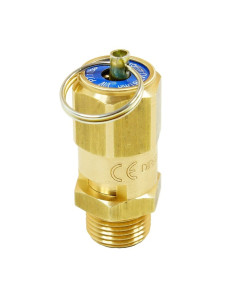
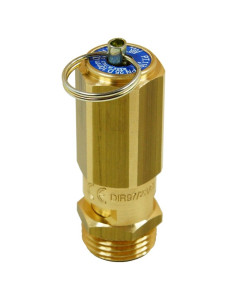
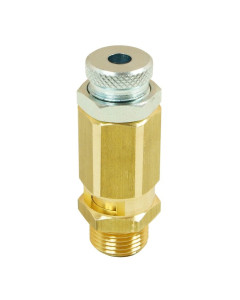
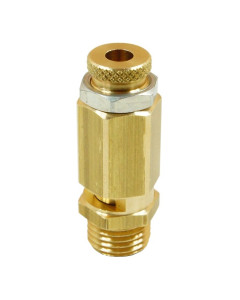
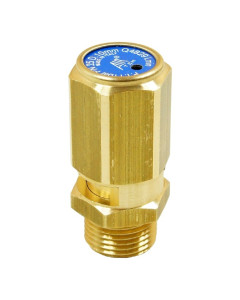
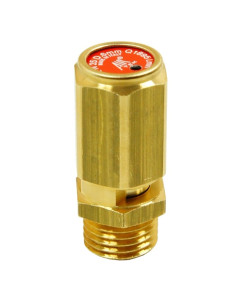

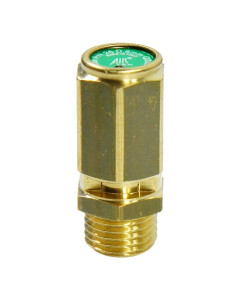
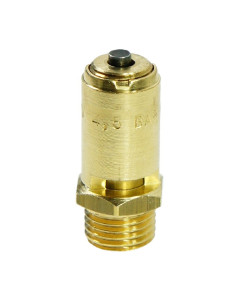
Login and Registration Form